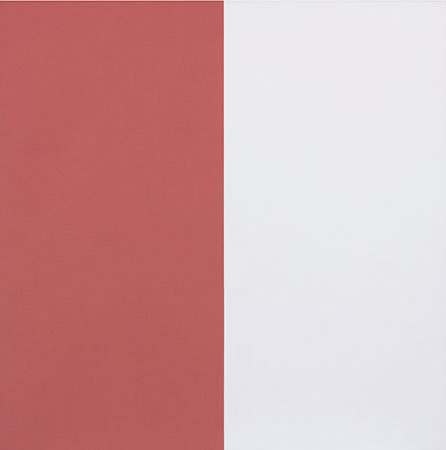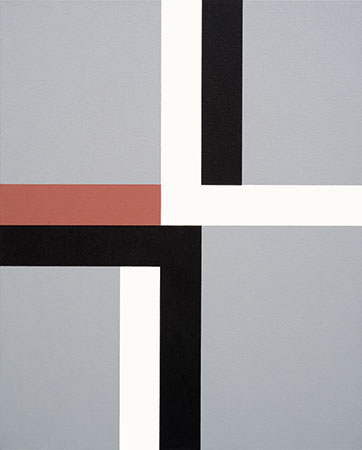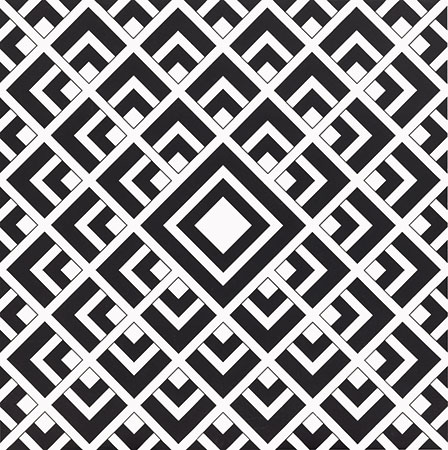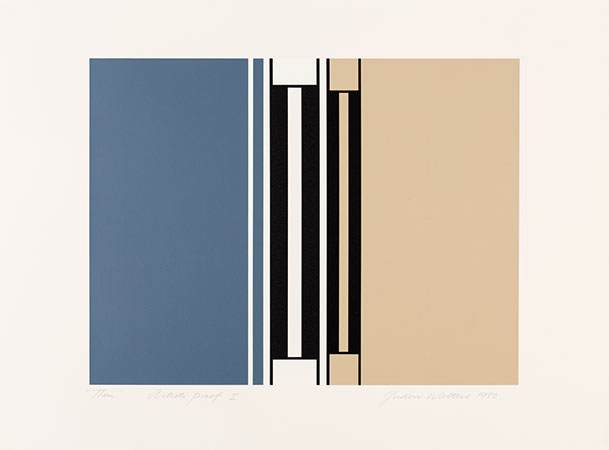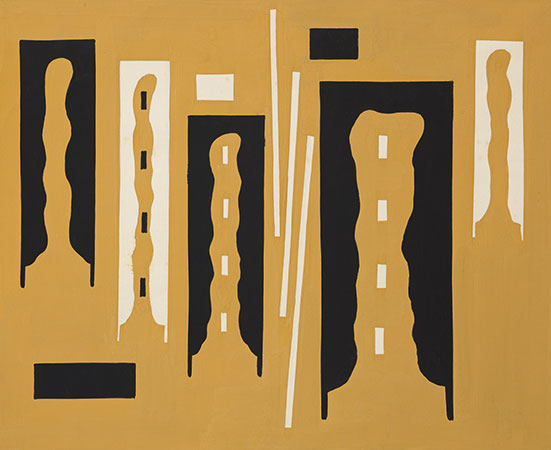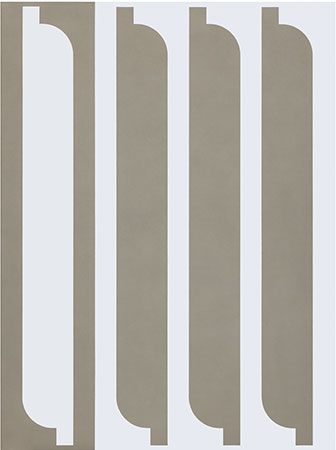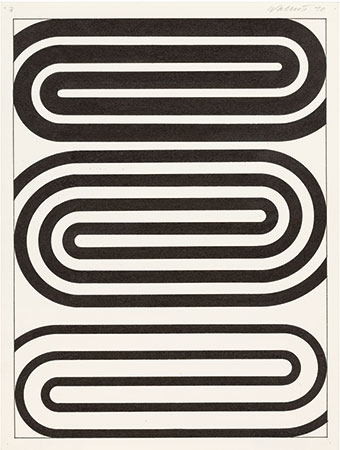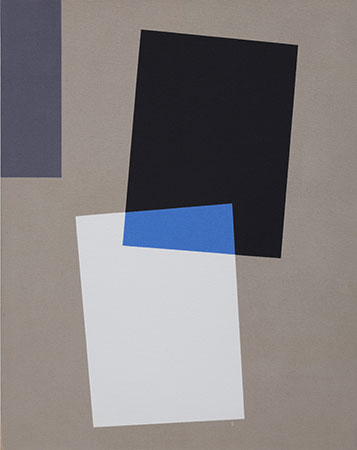Across five decades, Walters developed a dynamic visual language which consisted of a vocabulary of elegant geometric forms. Art historian Francis Pound put language to Walters’ abstraction, describing and naming a number of the forms. Pound listed these in the 2004 publication Walters En Abyme: transparencies, stripes, interlocks, ziggurats, notched rectangles, mini-retrospectives (which gathered into one work motifs previously used in others), sprocket-edged forms, spirals, tessellations, tapa-like triangulations, crosses (which Walters called Constructions), disintegration and rearrangement of a given form within the one work, quartered rectangles, horizontal or vertical rectangles bisected horizontally, and the composition en abyme.
This glossary details some of Walters’ most important and enduring forms, all of which can be identified in this exhibition.

